Project Tacoma: Removing Toyota LSPV (Load Sensing Proportioning Valve)
The system is designed to compensate for the payload a truck is carrying by sending the appropriate amount of fluid pressure to the rear brakes (the goal is to deliver maximum stopping power without causing the rear tires to skid and lose traction). The LSPV uses a mechanical linkage to determine ride height/payload (system assumes that an empty truck is going to ride higher than a full one). This is a great feature for stock trucks, but we have two problems with it.
First: The mechanical linkage between the LSPV, mounted to the inner driver's-side frame-rail and the passenger side axle housing is not physically capable of the range of motion that our long travel suspension provides.
Second: After altering the ride height (approx. 3" lift) and significantly changing the weight distribution (removal of stock bed, rollcage, suspension, etc.), the LSPV no longer delivers the proper line pressure to the rear brakes.
We decided to remove the stock LSPV altogether and replace it with a racing-type manually adjustable proportioning valve. The proportioning valve we bought from Kartek is infinitely adjustable between open & closed, and only driver input changes the percentage of line pressure to the rear brakes.
The obvious disclaimer here- is that the brake system will no longer automatically compensate for payload, and the brake bias must be properly adjusted for performance and safety.
INSTALLATION
| The picture on the left shows where the brake-lines/fittings thread into the LSPV housing. Disconnect both of the hard-lines from the LSPV, and remove the return-line all the way forward to the T-fitting (do not remove the pressure-line from the frame-rail). Then disconnect the flexible brake line from the LSPV, and finally remove the LSPV from the frame-rail. All of the related hardware can also be removed, including the linkage/arm bolted to the axle housing (shown in picture on right). | |
| We did test the braking performance without the LSPV before we installed the manual proportioning valve from Kartek to see if it was really necessary. The rear brakes had enough pressure to lock up our rear tires even at slow/rolling stops, so we immediately installed the manual proportioning valve (replacing the T-fitting junction shown in the picture on the left). The valve has one-port-in and one-port-out, so we just installed a 45 fitting on the inlet side and bolted the manual proportioning valve down using the same mounting hole that the T-fittings were threaded into. The adjustment knob is easy to access anytime we need to change the brake bias, and we have noticed much better braking performance since completing the installation. | |
Contact Information: |
Kartek Off-Road
909.737.7223
www.kartek.com
offroad@kartek.com
www.holley.com
Talk about our Tacoma Project in the
Tacoma BBS
Send us
Email about Project Tacoma

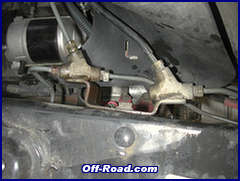
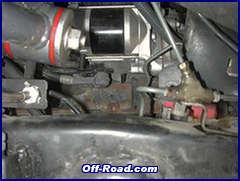

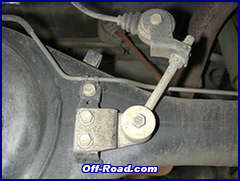
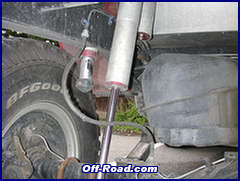
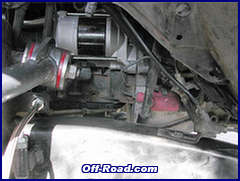
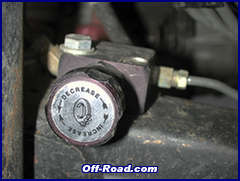

 Your Privacy Choices
Your Privacy Choices